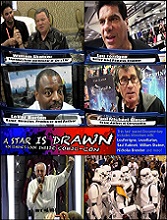In the late 19th century, the forces of religious division in America targeted Catholics. Josiah Strong’s book Our Country: Its Possible Future and Present Crisis, referred to Catholics as “the alien Romanist” who swore allegiance to the pope instead of the country and rejected core American values such as freedom of the press and religious liberty. The book remained in print for decades and sold nearly 200,000 copies.
In the early 20th century, the forces of religious division in America targeted Jews. Harvard scholar Diana Eck writes, “In the 1930s and early 1940s, hate organizations grew and conspiracy theories about Jewish influence spread like wildfire.” In 1939, Father Charles Coughlin’s Christian Front filled Madison Square Garden with 20,000 people at a vitriolic anti-Semitic event complete with banners that read: “Stop Jewish Domination of America.”
Today, the forces of religious division demonize Muslims. Tennessee’s lieutenant governor, Ron Ramsey, says Islam — a faith of 1.5 billion people founded 1,400 years ago — could well be a cult and not a religion. Therefore, he continues, constitutional religious liberty guarantees might not apply to Muslims.
Mosques and Muslim community centers are being vociferously opposed from New York to Tennessee to California. A church in Florida proudly posts a roadside sign that reads, “Islam is of the Devil,” and is planning an event called “International Burn a Quran Day.”
The same arguments marshaled against Jews and Catholics in previous eras are being advanced against Muslims today. You’ve heard the charges:
•The tenets of Islam are opposed to the values of America.
•Muslims have undue influence with American elites.
•Muslim integration into America is a veiled Islamic invasion.
It is easy to imagine Strong’s book written today with “the alien Islamic” replacing “the alien Romanist,” or a Father Coughlin-style rally at Madison Square Garden with tens of thousands chanting, “Muslim go home.”
The forces of religious division have always been alive in America, but they have never defined America. The core principle of our nation is that a diverse people can live together in unity. Our motto, placed on the seal of the United States in 1776 when we became a country, is E Pluribus Unum: out of many, one.
Our Founding Fathers fought for this ethic. Addressing the Hebrew Congregation of Newport, R.I., as America’s first president, George Washington expressed this hope: “May the children of the stock of Abraham who dwell in this land continue to merit and enjoy the goodwill of the other inhabitants, while every one shall sit in safety under his own vine and fig tree, and there shall be none to make him afraid.”
But unity in America is not to be taken for granted. Every generation must both preserve and protect our nation’s core principle, and extend and expand it.
What we need today is a force advancing this value of unity and returning the voices of division to the margins. I think this force is going to come from an interfaith movement.
Here’s what that could look like: Civic groups could organize interfaith service projects, such as those fostered by Habitat for Humanity, bringing a community’s Jews, Muslims, Christians, Buddhists, Hindus, Humanists and others together for an afternoon of volunteering and interfaith dialogue.
Pastors, rabbis and imams could preach about how the teachings of their respective religions inspire cooperation with those of different faiths. These faith leaders could then hold up things they admire about other faith groups.
Universities could offer courses that emphasize the history of cooperation between religious groups instead of focusing just on the stories of conflict.
Political leaders could give speeches about shared values such as mercy, compassion and hospitality that serve as common ground between religions.
Ben Franklin — like his fellow Founders Washington, Madison and Jefferson — would recognize such a nation. Franklin helped set in motion our traditions of openness, unity and cooperation. In the 18th century, he helped build a public hall in Philadelphia with the express purpose that it embody the true American spirit. He said that the hall exists “expressly for the use of any preacher of any religious persuasion who might desire to say something to the people at Philadelphia … so that even if the mufti of Constantinople were to send a missionary to preach Mohammadanism (Islam) to us, he would find a pulpit at his service.”
The forces of religious division targeting Muslims seek to take America off course. We must not forfeit the territory to them. In America, we don’t discriminate against people of any religion. In America, we will not be divided by faith. In America, everyone has a place. In America, we are better together.
This piece was originally published in USA Today.
Read more: Islamophobia, Islam, America, Muslims America, First Ammendment, Judaism, Catholicism, Religious Freedom, Religion News






